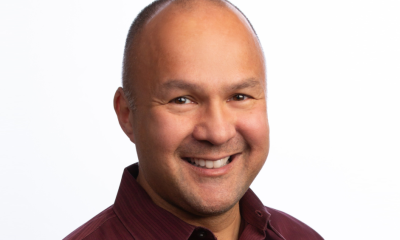Interviews
Jeff Kofman, Founder & CEO of Trint – Interview Series

Jeff Kofman, is the Founder & CEO of Trint, after a 30-year career with ABC, CBS and CBC News, Jeff got tired of hitting the wall of manual transcription and watching every story unnecessarily stop in its tracks. In 2014, Jeff and a team of developers leveraged AI to do the heavy lifting, and Trint was born.
Today Trint is an AI-powered SaaS platform that goes beyond transcription to boost every stage of the content creation workflow.
From transcription to editorial tools, real time collaboration to export and publishing – making every step easier for newsrooms, podcasters, local businesses and global organizations to share stories faster and easier than ever.
You had a distinguished 30-year career with ABC, CBS and CBC News, what were some of the issues that you encountered with traditional manual transcription?
I lived the pain of manual transcription every day as a journalist. Long before I had the idea of inventing and building Trint, I wondered why there wasn’t a better way.
Manual transcription was always the bottleneck in my workflow as a TV reporter. I’d do my interviews, listen to a news conference, read my research, look at my footage and THEN… my producer and I would disappear into the Black Hole of Transcription.
I can’t write my TV news story until I have precise transcripts of the quotes or soundbites I want to use. I need to know what they said and how long that soundbite runs. That meant sitting in a screening room or at our desks with headphones on, hitting PLAY then PAUSE. Then type some words. Then PLAY. PAUSE. And repeat. It could take hours. So tedious. So essential.
Trint launched in 2014, can you discuss how the idea was born?
I never imagined I’d be a tech guy. It was never in my life plan. It happened by chance.
I had a casual conversation with some software developers who had done some rudimentary experiments with audio and text (not transcription) in 2013.
I innocently asked: why can’t I use automated speech-to-text to transcribe my interviews.
I remember one of the guys asking me: why would you want to do that?
I answered: because manual transcription is the pain point in my work as a reporter, I loathe it.
We kept in touch and did some experiments. It quickly became clear that we had invented the future. I left my job as London Correspondent for ABC News a year later and we began building Trint.
What were some of the challenges of launching a transcription service in those early days?
Automated transcription is a discrete problem. People who don’t live the workflow of reporters and content creators have no idea how they create stories. I remember meeting some very wealthy angel investors in the early days and they just couldn’t grasp why reporters like me need transcripts. It took a lot of explaining to get them to understand how a reporter works.
I think that’s easier today. We are all content creators.
What are the different machine learning algorithms that are currently used at Trint?
We have a super smart bunch of engineers and data scientists that are always tinkering with whatever they can be hands on with and wherever their imaginations can take them. As you would understand, our focus is on how automated transcription can speed up workflows for our media customers, which means we always work around speech, speakers, languages and acoustics. NLP and speech processing algorithms are part of our day-to-day, but we will investigate any creative ways to use AI to help journalists extract information from videos, audios and images. Rich transcription lets us give more context to their content, makes it all more searchable, and ultimately lets them find the moments that really matter and get them out to their audiences as quickly as possible.
What languages are currently offered, and are there any differences in transcription quality between the different languages?
We offer about 45 languages that you can transcribe and are always adding more. Some are in “beta” and others that are a lot more mature, which depends on the size of training data sets that help build the models. We constantly measure the accuracy of our models for each language to constantly develop our models and to improve their performance.
We are always looking at what new models are becoming available to see if we can bring them into our secure ASR processing environment.
But it’s not only about the languages we transcribe – our customers can also have that transcript translated into almost any language.
Outside of transcription, Trint is an AI-powered SaaS platform that is designed to improve content creation workflow, can you discuss some of the other tools that are offered?
Although at the heart of Trint is our AI-powered transcription, what we obsess about is why those transcriptions are useful to our users, and how we can help them get value as quickly and easily as possible. That means having a deep understanding of their workflows, so we can try and make every step as seamless as possible.
Ultimately, we want them to capture any press conference, interview or event anywhere, at any time, in any language and make use of it as it happens. That means making it easy for them or their team to verify and use the live transcription as it happens – verifying, sharing and translating key quotes seconds after they are spoken.
Our mobile app means that can happen even if you only have a phone on you, and ensures everything is securely transmitted to your team even when the connection is patchy.
Our Story Builder is designed to let you find the key moments in all your content and turn them into a new narrative that can be exported to other key tools in your content production workflow. Whether that’s a rough cut for video editing, a podcast transcript or an article. If you need to use the text of the audio as captions, our collaborative editor can help there too.
You also have a podcast that you personally host called StoryTech, which looks at how technology shapes stories. Could you elaborate on what this podcast is, what listeners should expect, and why they should tune in?
StoryTech is really the intersection of my two careers: a reporter and a tech inventor. It looks at how technology and innovation shape the way stories are told.
The early episodes look at how CGI was used to bring down the ice wall in Game of Thrones, and how the invention of the 35mm Leica camera in the 1920s led to the spread of photojournalism and the creation of LIFE magazine.
I’m fascinated by the impact of innovation on storytelling. That’s what StoryTech is about.
What is your vision for the future of Trint?
That’s the challenge every innovator is wrestling with today. How does the fast pace of innovation open opportunities for my product?
Our customers want a product that creates simple, intuitive efficiencies that fit seamlessly into their workflow. That means going far beyond transcription.
Trint will leverage AI to do things that were unimaginable just a few years ago: identify voices, faces, sentiment, context, facts and falsehoods. This will happen in any language – translating from that language as it’s spoken. The key is to do this and so much more in a way that integrates into other products to create one painless workflow.
I don’t see Trint replacing reporters, writers and content creators. It is about liberating them from the drudgery of their work and allowing them to focus their time on creativity. It’s exciting to try to imagine the future. I’m not gonna lie: it’s also daunting.
Thank you for the great interview, readers who wish to learn more should visit Trint or watch the StoryTech podcast.












